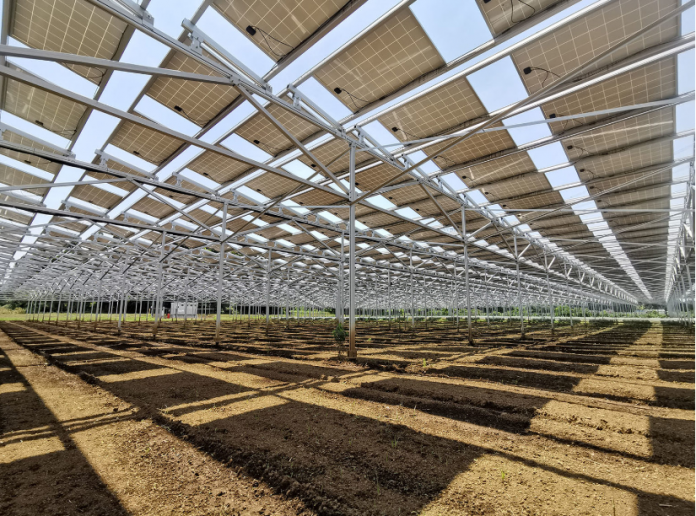Japan’s New Energy and Industrial Technology Development Organization (NEDO) recently released new guidelines to develop and build ground-mounted agrivoltaic facilities, in a bid to increase the presence of such projects in the land-scarce country.
“The guidelines were prepared under the supervision of the Ministry of Economy, Trade and Industry (METI),” said Takeshi Magami of Chiba Ecological Energy, a leading player in Japan’s agri-PV sector in Japan.
Magami told pv magazine that agrivoltaic projects are not allowed to exceed heights of 9 meters, due to building regulations. Projects that use trackers or facilities installed in barns and horticultural greenhouses have been excluded from the guidelines.
“This is because there are not enough examples in Japan and the necessary data for verification could not be collected,” Magami said.
He noted that existing solar plants where crop growth or livestock are brought in after the project planning and construction stages might not necessarily be seen as agrivoltaic plants.
“The difference between such solar power plants and projects that are considered agrivoltaic facilities is whether or not the plant is planned from the design stage to allow for optimal agricultural production,” Magami said. “Also, in the case of agrivoltaic power generation, the type of land is treated as farmland, so there are related tax benefits.”
Most of the operational agrivoltaic plants in Japan were built under the country’s feed-in tariff scheme.
“There are also incentives for self-consumption or projects with a power purchase agreement (PPA),” Magami explained. “METI is currently providing a rebate covering 50% of a project’s costs, but so far there are about 10 projects of this kind in Japan.”
According to recent statistics from the Ministry of Agriculture, Forestry and Fisheries, 200 MW of grid-connected agrivoltaic projects were in operation in Japan by the end of September. The projects cover a total surface area of around 181.6 hectares and they are spread across the entire country.
According to Magami, the National Institute of Advanced Industrial Science and Technology (AIST) and the National Agriculture and Food Research Organization are currently mapping all the agricultural land suitable for agrivoltaics.
“Current estimates suggest that 10% of Japan’s agricultural land could be equipped with agrivoltaic power generation, which is a potential of around 440 GW,” he said.
Magami also said that agriculture-linked solar will probably not completely replace conventional utility-scale solar in Japan.
“However, the taxation of land rises significantly when many lands are converted to solar power plants, and in the suburbs of cities, the taxation is comparable to that of residential land,” he noted. “These power plants are expected to find it difficult to continue their business once the FIT scheme ends, and they will have no choice but to withdraw.”
Agrivoltaics projects are deployed on farmland, so there are no taxation issues, and the land can be used very inexpensively, even in urban areas. As a result, the rapid increase in solar power plants under the country’s FIT will gradually be replaced by agrivoltaics.
The International Renewable Energy Agency (IRENA) recently identified land scarcity and grid congestion as the two main reasons behind the limited success of Japan’s six solar auctions. IRENA also pointed to the high costs of PV installations in the Japanese market. It said it is particularly difficult to secure permits for solar parks above 40 MW in size in Japan, as there is a long approval process, in addition to high land costs and grid congestion.






